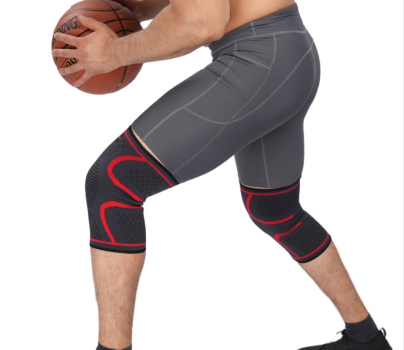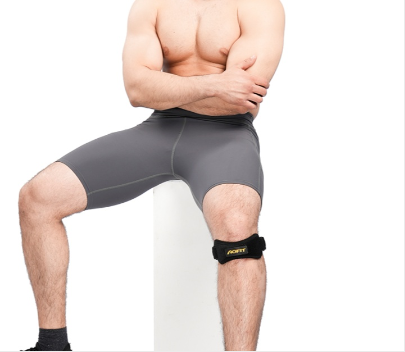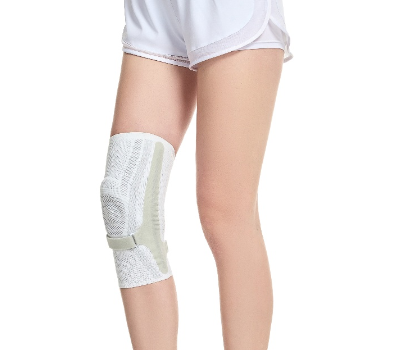Knee pain can be debilitating, affecting mobility and quality of life. Whether you're an athlete or someone dealing with chronic knee issues, finding the right support can make a significant difference. In this guide, we'll explore the various types of knee sleeves, their benefits, limitations, and how they can aid in managing conditions like patellar tendonitis.
Introduction to Knee Sleeves
Knee sleeves are popular among athletes and individuals seeking joint support and pain relief. They provide compression and warmth to the knee joint, aiding in circulation and reducing stiffness. Additionally, knee sleeves offer proprioceptive feedback, helping users maintain proper form and stability during physical activities.
Types of Knee Sleeves
There are primarily two types of knee sleeves: loosely fitting and tighter knee sleeves. Each serves a specific purpose based on the user's needs and the condition being addressed.
Benefits of Loosely Fitting Knee Sleeves
Loosely fitting knee sleeves primarily focus on keeping the knee warm and providing an additional layer of insulation. This helps in promoting blood flow to the area, reducing stiffness, and enhancing comfort during movement.

Patellar Tendon Straps
Patellar tendon straps are designed to alleviate pain associated with conditions like patellar tendonitis. By applying pressure to the tendon, these straps can reduce discomfort, improve proprioception, and minimize pre-landing muscle activation, particularly in the quadriceps muscle.

Knee Sleeves with Gel Ring
Some knee sleeves feature a gel ring around the kneecap, offering targeted support for conditions like patellofemoral pain syndrome or patellar maltracking. This design helps in stabilizing the patella and reducing friction, enhancing overall comfort during physical activities.

Knee Braces vs. Knee Sleeves
While knee sleeves focus on providing compression and support, knee braces are typically bulkier and sturdier. They are commonly used post-injury or surgery to immobilize the joint and facilitate healing. Knee braces are not essential for managing patellar tendonitis but may be beneficial in certain cases.
Limitations of Knee Sleeves
It's important to recognize that knee sleeves offer temporary relief and do not provide a permanent solution to underlying issues like tendonitis. While they can reduce pain and stiffness, they should not be relied upon as a sole means of treatment.
Treatment for Patellar Tendonitis
To effectively address patellar tendonitis, a comprehensive approach is necessary. This includes incorporating strengthening exercises to improve tendon resilience and addressing biomechanical issues that may contribute to the condition.
FAQs
Are knee sleeves recommended for everyday use?
Knee sleeves can be worn daily, but it's essential to listen to your body and not rely solely on them for pain management. If you experience persistent discomfort, consult with a healthcare professional.
Can knee sleeves help with arthritis-related knee pain?
While knee sleeves can provide some relief for arthritis-related knee pain by offering support and compression, they may not address the underlying cause. Other treatments such as medication, physical therapy, and lifestyle modifications may also be necessary.
What should I consider when choosing the right knee sleeves?
When selecting knee sleeves, consider factors such as the level of compression needed, the intended use (e.g., sports, daily activities), material comfort, and sizing. It's advisable to try on different options and consult with a healthcare provider if needed.
Are there any risks associated with wearing knee sleeves?
Generally, knee sleeves are safe to use for most individuals. However, wearing sleeves that are too tight or using them excessively may restrict blood flow and cause discomfort. It's essential to follow usage instructions and monitor for any adverse reactions.
How do I know if knee sleeves are helping with my condition?
Pay attention to changes in pain levels, mobility, and overall comfort when wearing knee sleeves. If you notice improvements in these areas, it's likely that the sleeves are providing some benefit. However, if pain persists or worsens, it's essential to reassess your treatment plan and consult with a healthcare professional.
Conclusion
In conclusion, knee sleeves can be valuable tools for managing knee pain and improving function in various conditions. Whether you're dealing with patellar tendonitis, arthritis, or recovering from an injury, knee sleeves offer support, compression, and warmth to aid in pain relief and enhance mobility. However, they should be used in conjunction with other treatment modalities and under the guidance of a healthcare professional. By incorporating knee sleeves into a comprehensive approach to knee health, individuals can optimize their recovery and maintain an active lifestyle.